La catedral de La Plata (SPA-ENG)
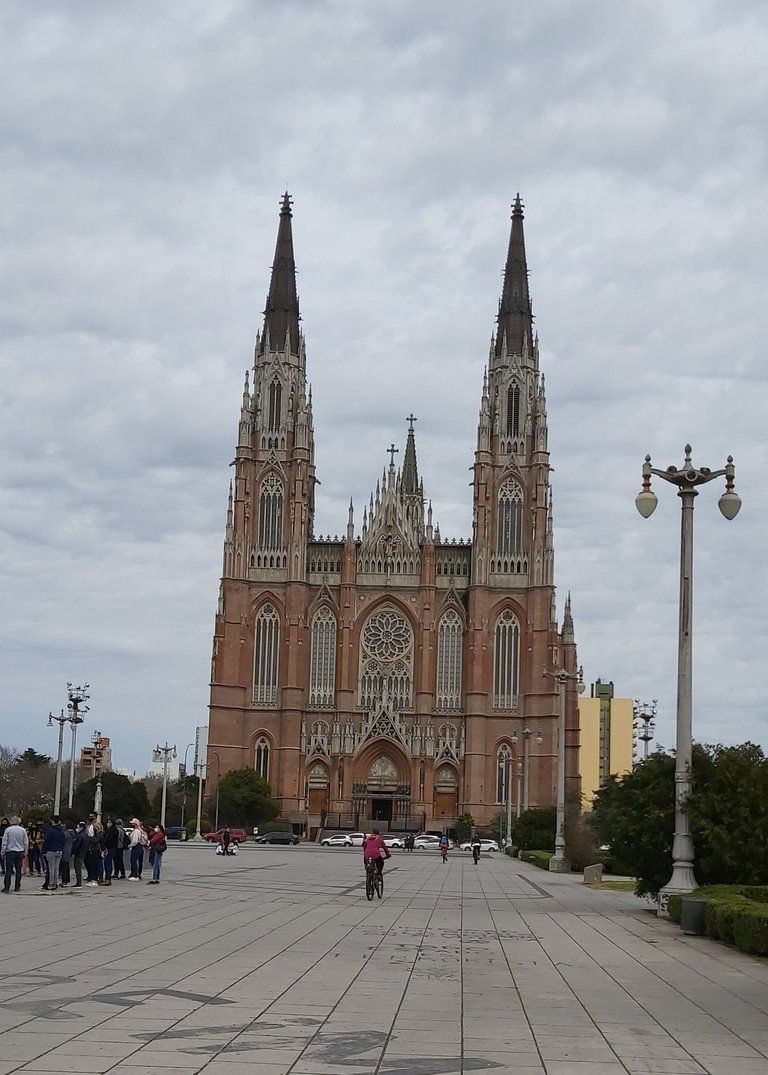
Pasada la mitad del siglo XIX, la Argentina pasaba por una serie de cambios profundos, había tensiones y disputas como la que existía entre el gobierno nacional y el de la provincia de Buenos Aires por la ciudad capital que en aquel momento era Buenos Aires y cumplía la doble función, capital del país y de su principal provincia.
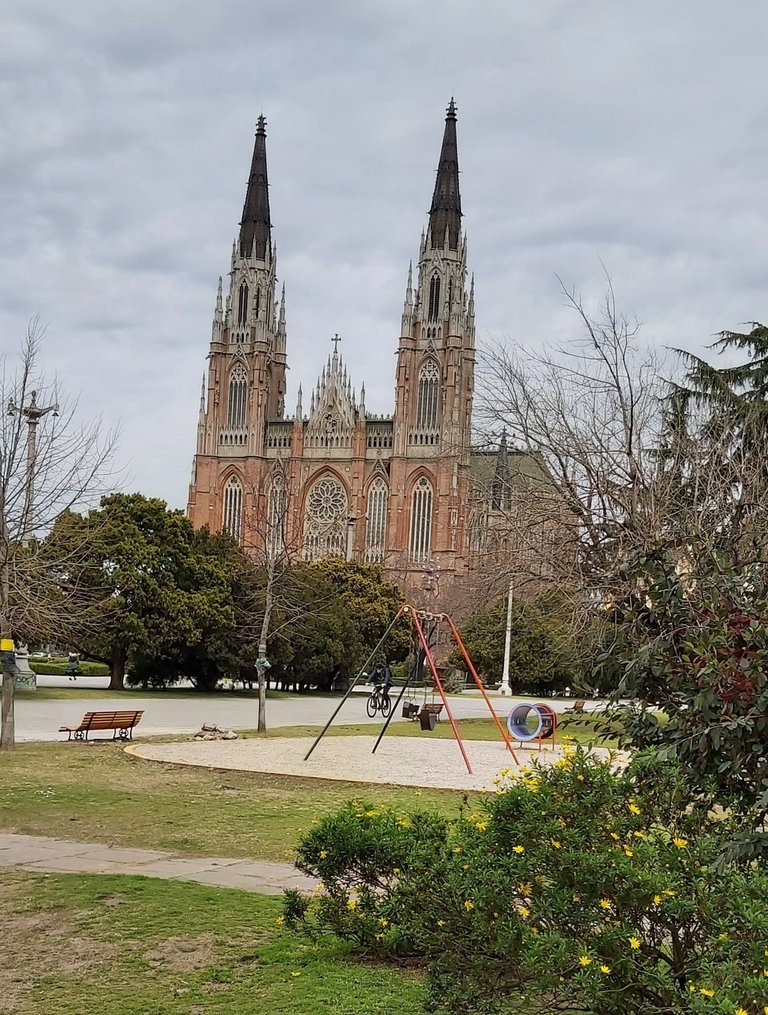
El gobernador de la provincia, por entonces Juan José Carlos Jacinto Dardo Rocha y Arana que para simplificar pasó a la historia como Dardo Rocha, impulsó con vehemencia la creación de una ciudad completamente nueva a la que trasladar las instituciones administrativas de la provincia, incluyendo el palacio de la gobernación y la residencia del gobernador. También allí debió extremar recursos y habilidades para zanjar disputas con importantes ciudades ya establecidas como San Isidro en el norte y Quilmes al sur que deseaban incrementar sus rangos de ciudades periféricas.
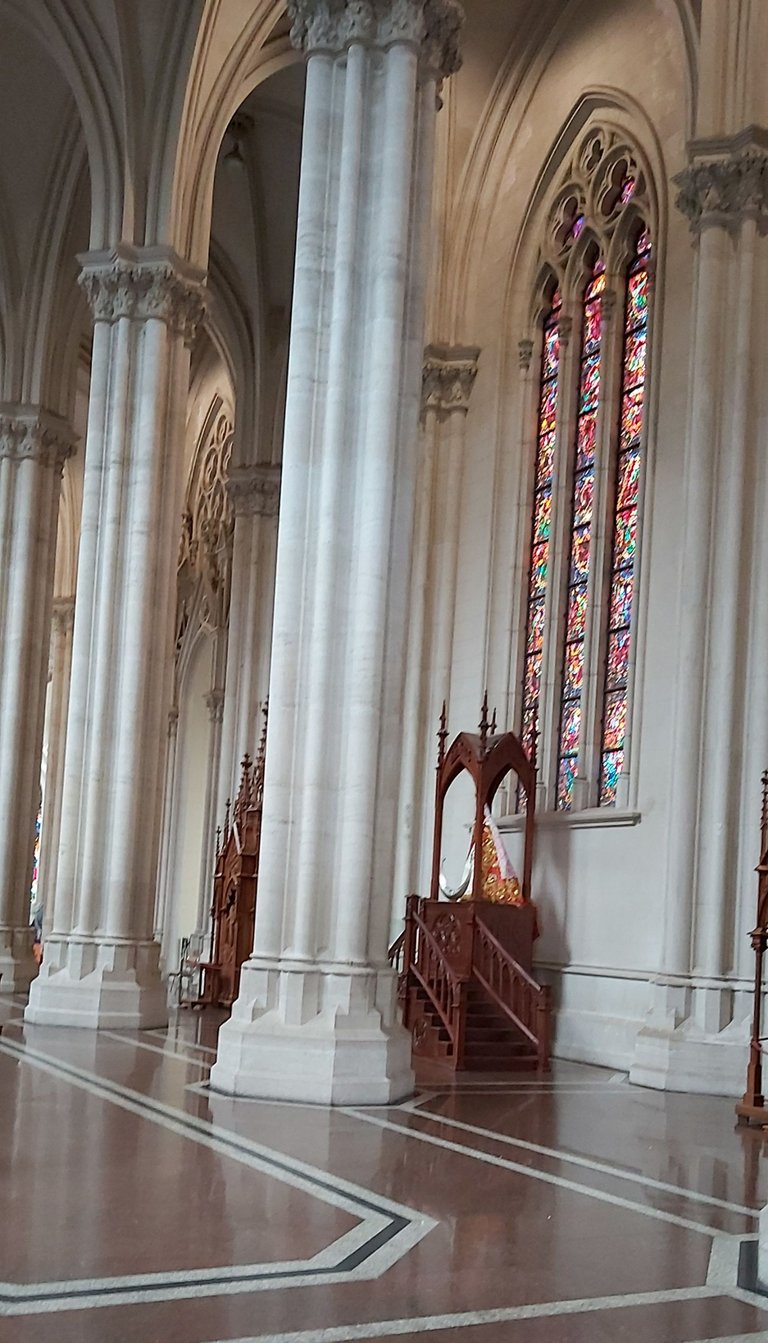
Finalmente, Rocha impuso sus ideas y se eligió un gran terreno (de los que sobraban por todos lados en aquellos tiempos) en inmediaciones de las lomas de Ensenada de Barragán, a unos 10 kilómetros del Río de la Plata y del puerto de Ensenada. Allí se diseñó, planificó y construyó la ciudad más moderna para la época, basada en un diseño del ingeniero Pedro Benoit. El acto inaugural se realizó en el año 1882, allí se colocó la piedra fundamental en el centro geográfico de la ciudad, hoy en día la plaza Moreno y contó con la presencia del gobernador Dardo Rocha y el ministro Victorino de la Plaza, en representación del presidente de la República, Julio Argentino Roca.
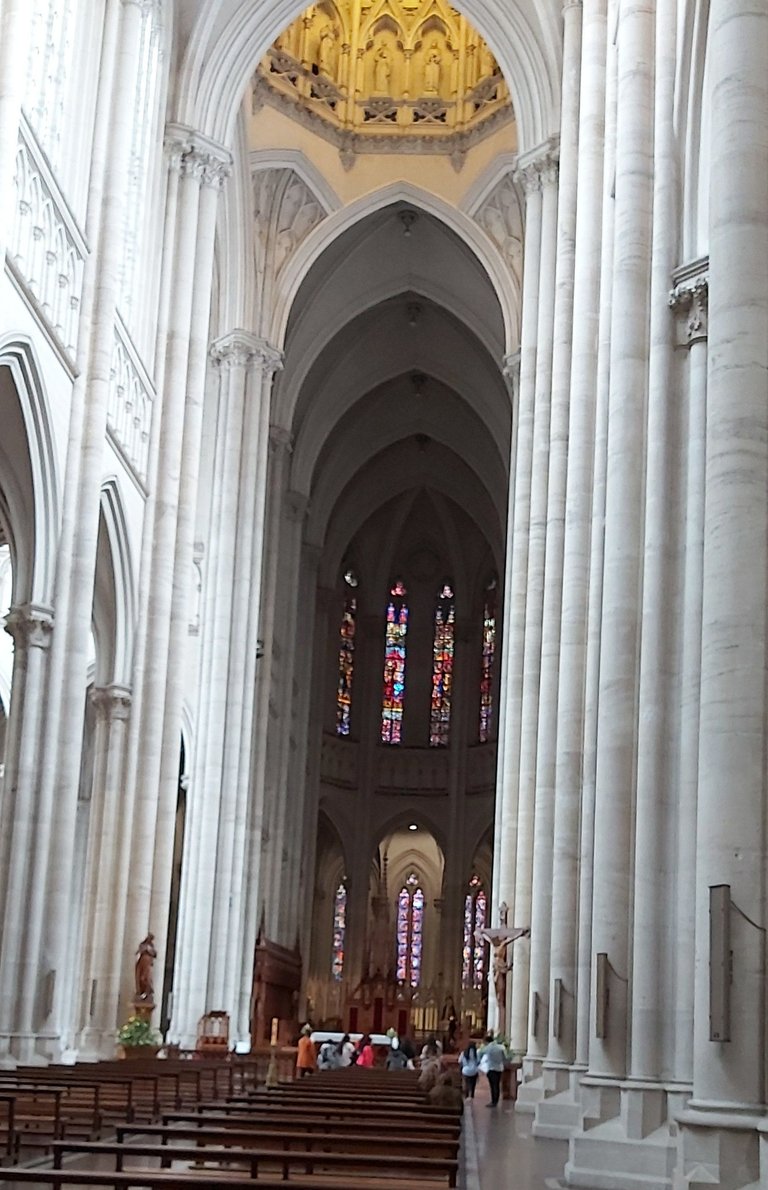
Como era de esperar, esa plaza central contaría a su alrededor con varios edificios de la administración provincial entre el ellos el palacio de gobierno, la sede municipal y los tribunales, surgió en aquel momento la necesidad de contar con una catedral acorde a la importancia de la nueva ciudad capital de la provincia más rica y próspera de toda la nación argentina.
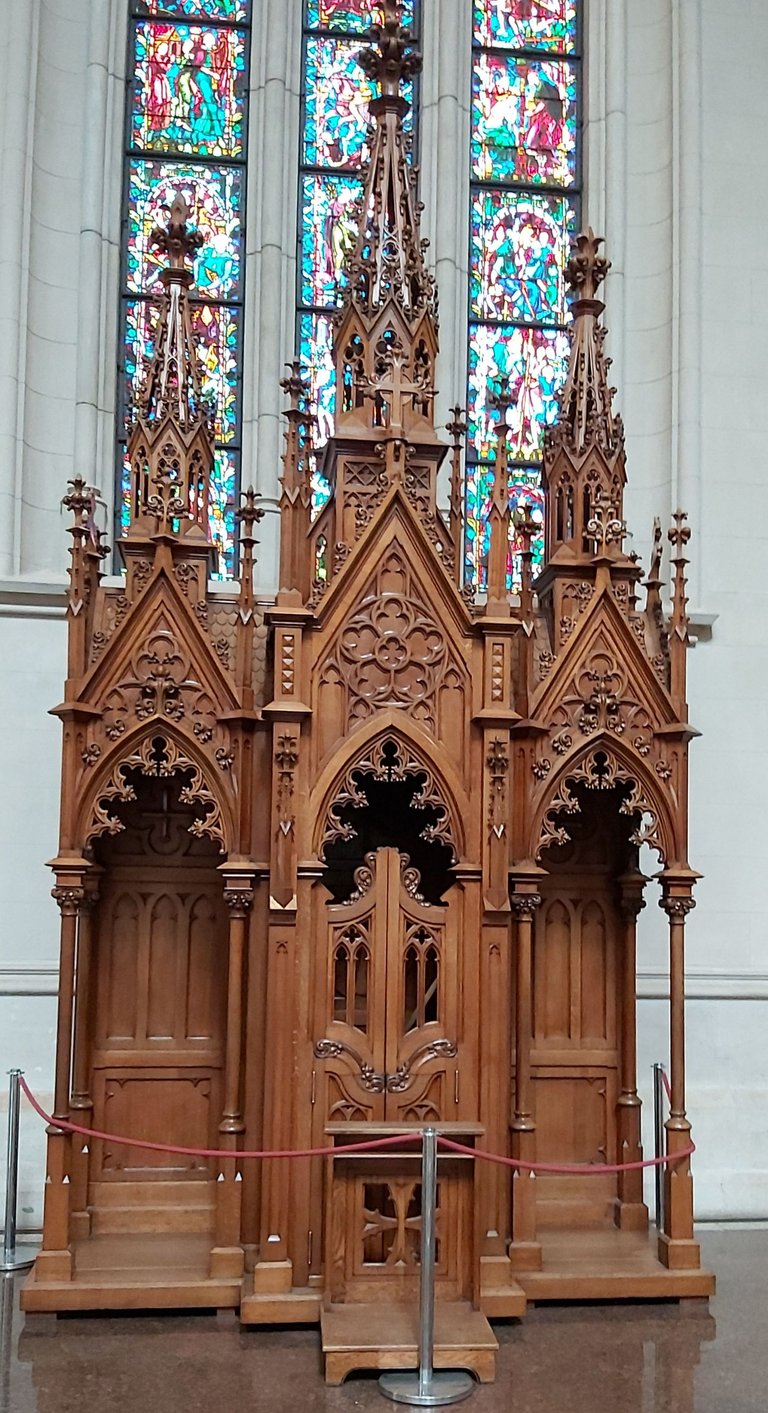
El proyecto desarrollado hacia 1884 también recayó sobre el ingeniero Pedro Benoit que buscó inspiración en el estilo neogótico europeo, entre varios ejemplos los más destacados fueron los de las catedrales de Amiens en Francia y la de Colonia en Alemania.

El lugar elegido para su emplazamiento fue en la misma plaza Moreno justo frente al palacio municipal cuya construcción aun luce el mismo aspecto de aquellos días.
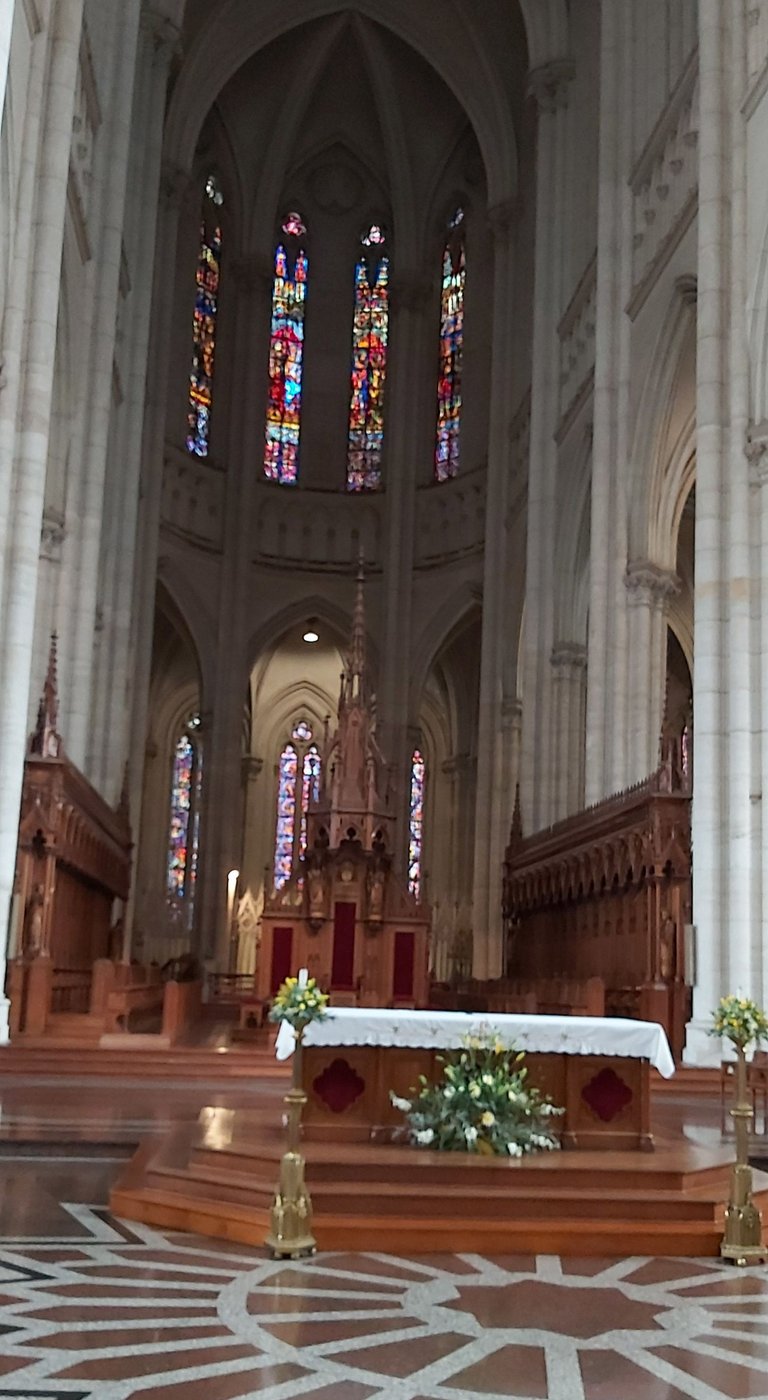
La Catedral sufrió varias suspensiones por diversos problemas, estructurales en principio, pero también financieros y de disputas políticas.
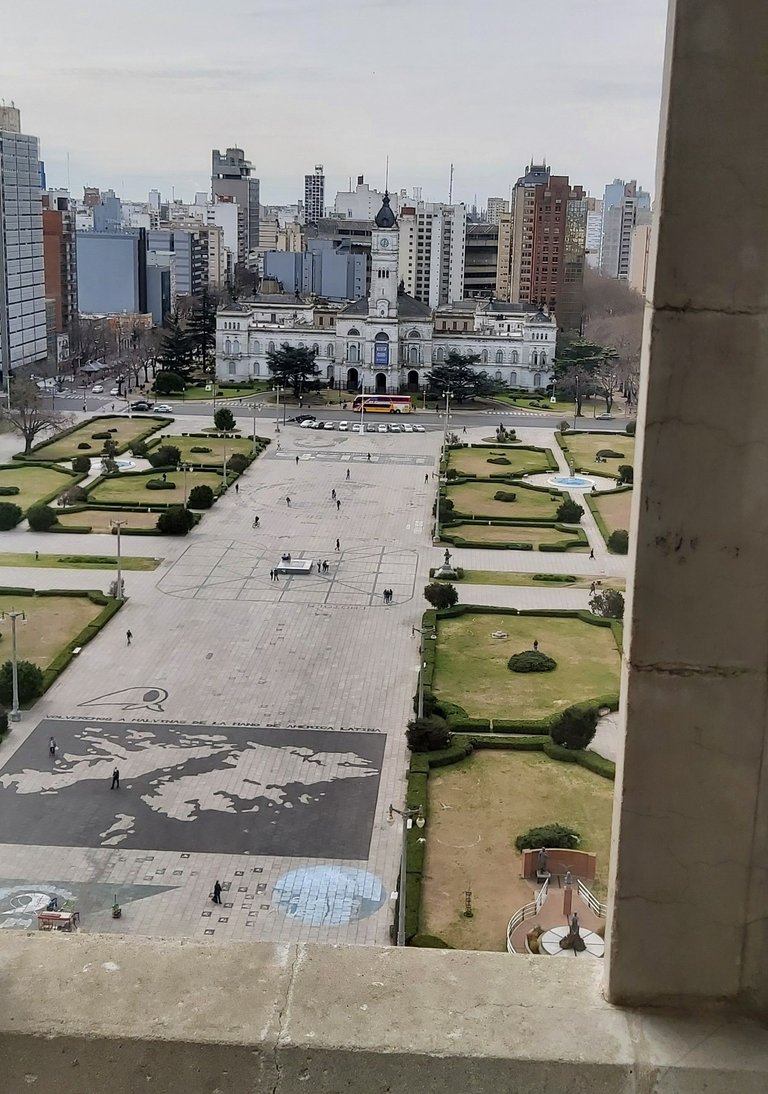
Recién para fines del siglo XX, más de 100 años después de su planificación, la catedral se dio oficialmente por finalizada.
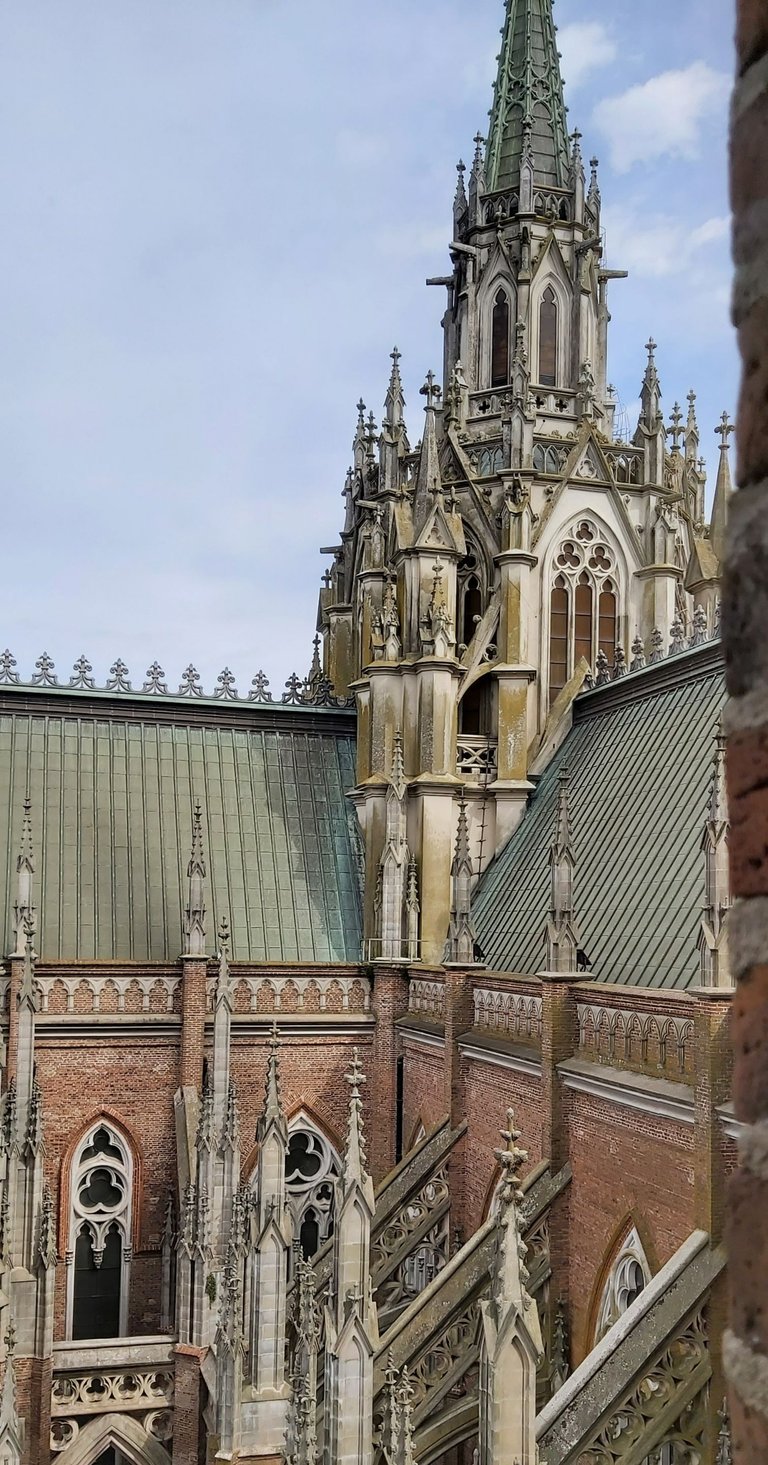
Posee una altura de 112 metros a la que llegan sus dos torres idénticas, su tamaño es tan imponente que se dice puede albergar 7000 personas. Es la sede del arzobispado de La Plata, centro de la vida litúrgica de la arquidiócesis y está dedicada a la Inmaculada Concepción. Se realizan misas diariamente, se desarrollan celebraciones patrias y otras festividades religiosas masivas como la procesión de la Inmaculada Concepción el 8 de diciembre de cada año.
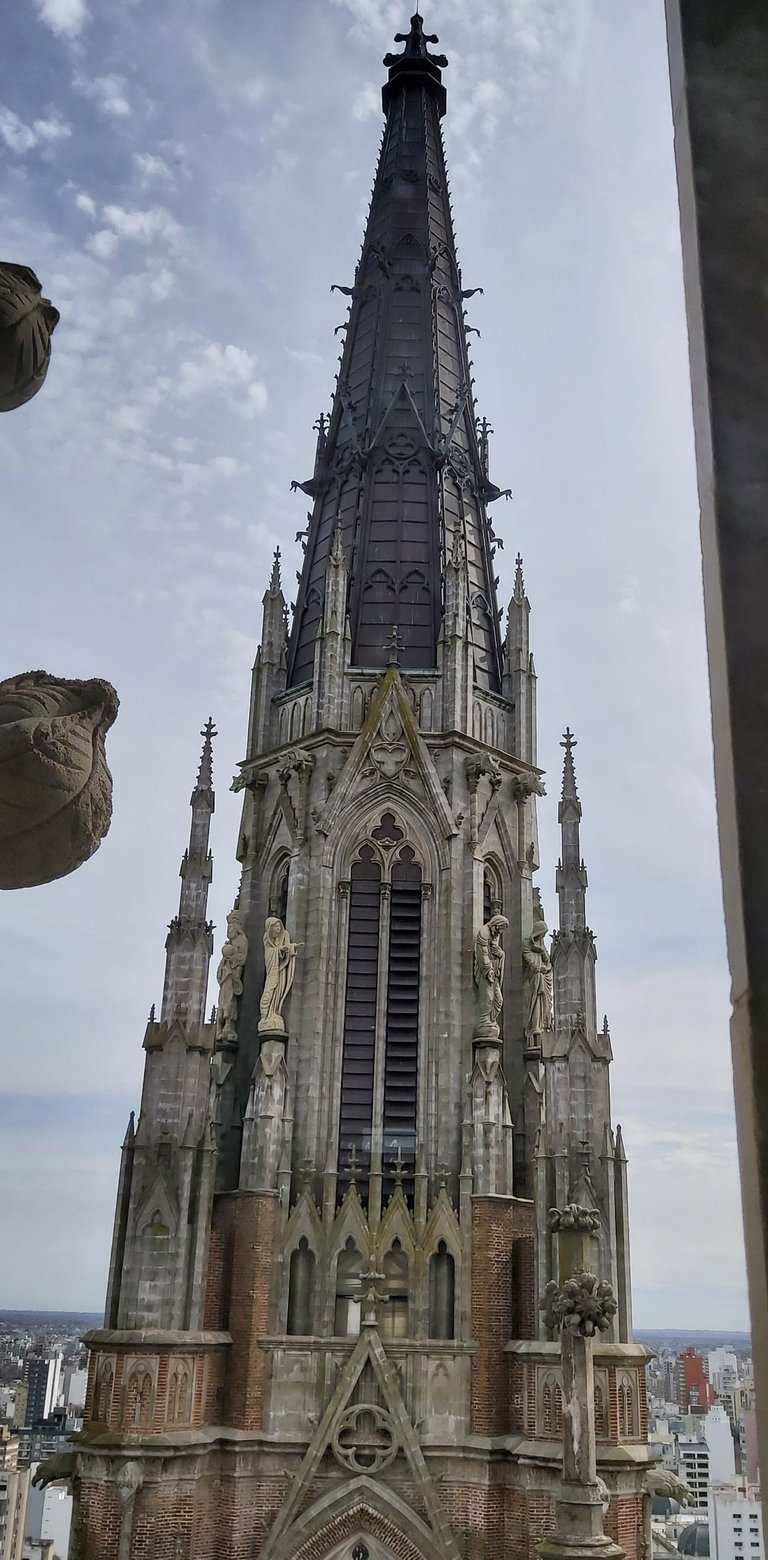
Su interior sorprende gratamente, está plagado de arte, simbología y objetos rituales de extraordinaria calidad y factura, desde sus pasillos laterales, confesionarios finamente tallados en madera, imágenes, exquisitos vitreax y estatuas, púlpito y presbiterio con un altar central acorde a la importancia del lugar, todo sobrecoge y alienta a la meditación y al íntimo encuentro con Dios.
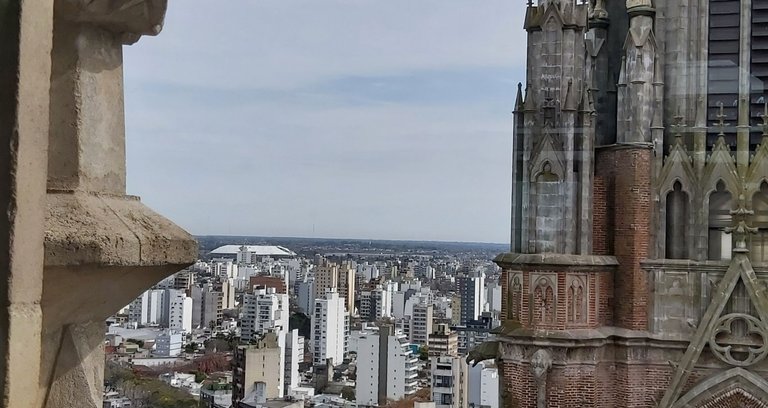
Por supuesto es una gran atracción turística y a diario hay visitas guiadas con acceso a muchas zonas de interés como por ejemplo el acceso por ascensor a una de sus torres desde donde se puede observar gran parte de la ciudad, incluido el estadio Único Diego Armando Maradona.
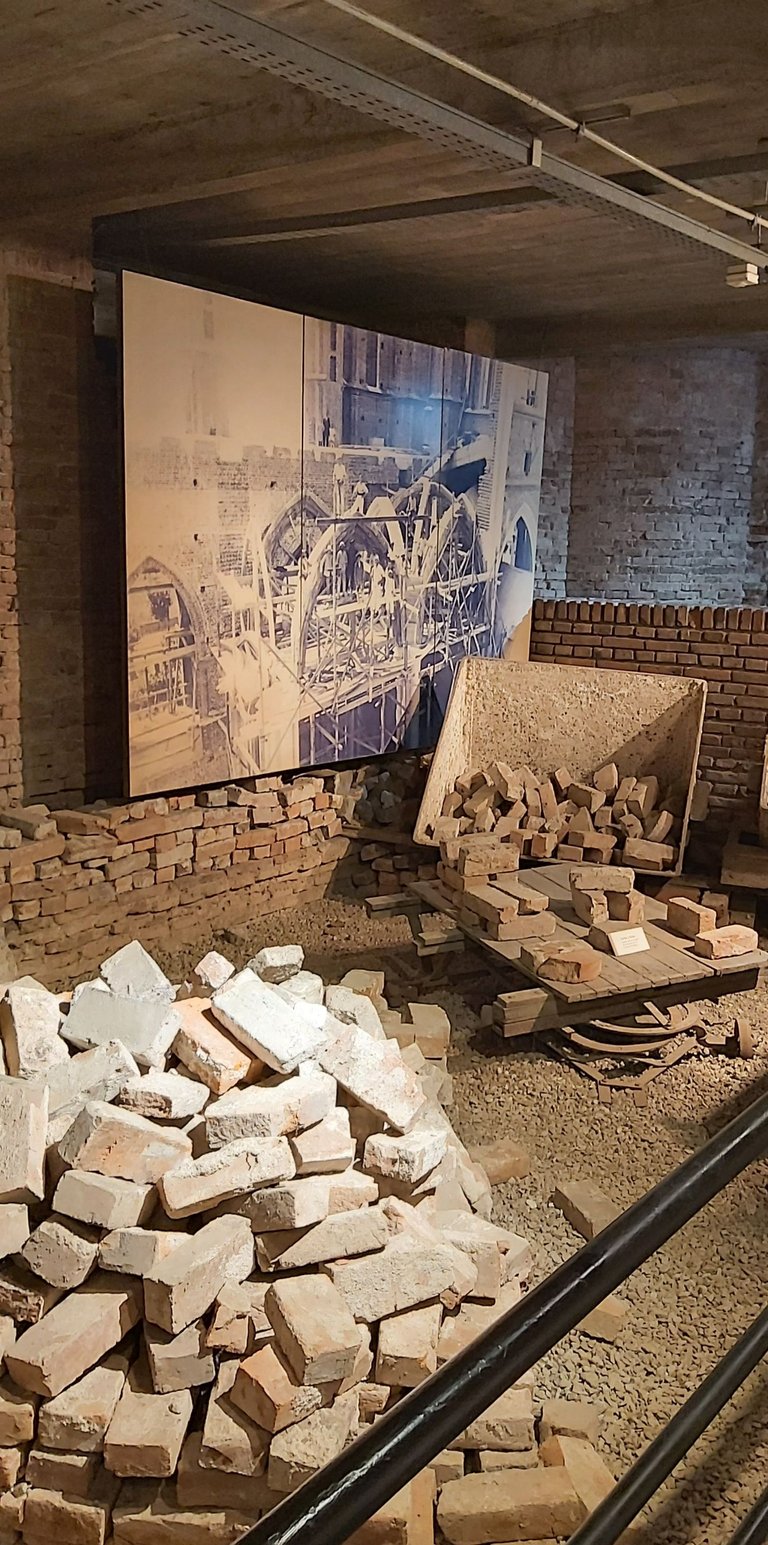
En los subsuelos funciona un museo con restos de la cripta original, reliquias y objetos litúrgicos e históricos, así como una zona donde se pueden observar bases, columnas, ladrillos y herramientas empleadas en la construcción.
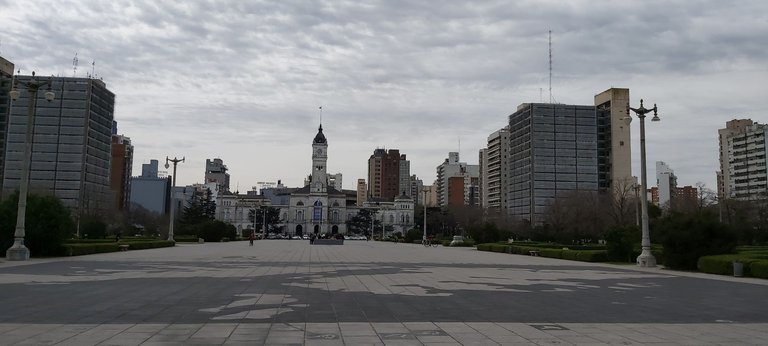
Yo nací en esa ciudad, muy cerca de donde está emplazada la Catedral, por supuesto tengo cariño por ella, por su significado y por su construcción, imponente desde todo punto de vista. Un verdadero orgullo para todos sus habitantes.
The Cathedral of La Plata
In the mid-19th century, Argentina underwent a series of profound changes. There were tensions and disputes, such as the one between the national government and the province of Buenos Aires over the location of the capital city. At that time, Buenos Aires served both as the capital of the country and its main province.
The governor of the province, Juan José Carlos Jacinto Dardo Rocha y Arana, who for simplicity's sake went down in history simply as Dardo Rocha, vehemently promoted the creation of a completely new city to which the province's administrative institutions, including the government palace and the governor's residence, would be relocated. There, too, he had to deploy extensive resources and skills to settle disputes with important, already established cities like San Isidro in the north and Quilmes in the south, which wished to increase their status as peripheral cities.
Finally, Rocha imposed his ideas, and a large plot of land was chosen (of which there was plenty everywhere at the time) near the hills of Ensenada de Barragán, about 10 kilometers from the Río de la Plata and the port of Ensenada. There, the most modern city for its time was designed, planned, and built, based on a design by engineer Pedro Benoit. The inaugural ceremony took place in 1882, when the cornerstone was laid in the geographic center of the city, now known as Plaza Moreno. Governor Dardo Rocha and Minister Victorino de la Plaza, representing the President of the Republic, Julio Argentino Roca, were present.
As expected, this central plaza would be surrounded by several provincial administration buildings, including the government palace, the municipal headquarters, and the courts. At that time, the need arose for a cathedral worthy of the importance of the new capital city of the most prosperous province in the entire Argentine nation.
The project, developed around 1884, also fell to the engineer Pedro Benoit, who sought inspiration in the European Neo-Gothic style. Among several notable examples were the cathedrals of Amiens in France and Cologne in Germany.
The site chosen for its construction was in the Plaza Moreno, directly in front of the municipal palace, whose construction still retains the same appearance as it did in those days.
The Cathedral suffered several suspensions due to various problems, initially structural, but also financial and political disputes.
It was not until the end of the 20th century, more than 100 years after its planning, that the cathedral was officially declared complete.
It stands 112 meters high, reached by its two identical towers. Its size is so imposing that it is said to be able to accommodate 7,000 people. It is the seat of the Archbishopric of La Plata, the center of the liturgical life of the archdiocese, and is dedicated to the Immaculate Conception. Masses are held daily, along with national celebrations and other mass religious festivities, such as the procession of the Immaculate Conception on December 8th each year.
Its interior is a pleasant surprise, filled with art, symbolism, and ritual objects of extraordinary quality and workmanship. From its side aisles, finely carved wooden confessionals, images, exquisite stained glass, and statues, pulpit and presbytery with a central altar in keeping with the importance of the place, everything is overwhelming and encourages meditation and an intimate encounter with God.
Of course, it is a major tourist attraction, and daily guided tours offer access to many areas of interest, such as elevator access to one of its towers, from which you can see a large part of the city, including the Diego Armando Maradona Stadium.
In the basement, there is a museum with remains of the original crypt, relics, liturgical and historical objects, as well as an area where you can see bases, columns, bricks, and tools used in the construction.
I was born in that city, very close to where the Cathedral is located. Of course, I have a fondness for it, for its significance and its construction, imposing from every perspective. A true source of pride for all its inhabitants.
Héctor Gugliermo
@hosgug
You can check out this post and your own profile on the map. Be part of the Worldmappin Community and join our Discord Channel to get in touch with other travelers, ask questions or just be updated on our latest features.
Me encantó conocer la historia de la ciudad y de esta catedral, ambas desconocidas para mí. No sabía que La Plata fuera de construcción tan reciente, es tan renombrada que mi mente la imaginaba con al menos varios siglos de historia. De lo que no hay dudas es de la inspiración gótica del templo y de lo bien que se llevó a cabo el trabajo, pues se podría colocar perfectamente en cualquier ciudad europea sin desentonar ni por los detalles exteriores ni por el interior. Puede ser de las catedrales más altas que haya visto, la longitud de esas columnas y muros es sobrecogedora, como la panorámica desde ahí arriba. Gracias por esta excelente publicación que me permitió viajar por unos minutos hasta esa bonita tierra hermana.
I have picked this post on behalf of the @OurPick project! Check out our Reading Suggestions posts!
Please consider voting for our Liotes HIVE Witness. Thank you!
Muchas gracias @palomap3, toda la ciudad fue planificada de una manera extraordinaria, cada 7 cuadras hay una plaza arbolada y cuenta con diagonales que facilitan el tránsito por la misma, aunque complican la ubicación de los visitantes no acostumbrados a su diseño, por suerte ahora existen aplicaciones que nos orientan al respecto.
La Catedral destaca por su imponente arquitectura y tamaño, digna de visitar al igual que varios otros atractivos, por ejemplo, el museo de Ciencias Naturales de La Plata donde su colección de Paleovertebrados asombra por la calidad y cantidad de especies exhibidas.
Saludos
Oh, me encantaría conocer ese Museo de Ciencias Naturales. Vivo en tierra de abundantes dinosaurios, hasta tenemos uno con el nombre, el Aragosaurus, jeje. Y un parque temático sobre el tema, Dinópolis. 😁
La idea de poner diagonales en la ciudad también la han utilizado aquí en España, Barcelona es el ejemplo más conocido. Ahora las aplicaciones hacen más difícil perderse, es cierto. Aunque los que viven allí se orientarán sobre todo por los negocios de los locales. Aquí nos orientamos con los bares. 😂
Congratulations @hosgug! You have completed the following achievement on the Hive blockchain And have been rewarded with New badge(s)
Your next target is to reach 8750 replies.
You can view your badges on your board and compare yourself to others in the Ranking
If you no longer want to receive notifications, reply to this comment with the word
STOPCheck out our last posts:
Esta catedral es muy linda! Argentina tiene arquitecturas preciosas. Saludos amigo ✨
Así es @quiubi, es hermosa.
Gracias por leer y comentar.
The church building has a very cool architecture, it looks very beautiful and I really like that For up the tower lift, it is truly a very beautiful church building.And has a very extraordinary history ❤️🙏
Exactly, it has a good history, and both the interior and exterior of the cathedral are worth seeing.
Thank you for reading and commenting @suarlex
Hiya, @lauramica here, just swinging by to let you know that this post made it into our Honorable Mentions in Travel Digest #2574.
Your post has been manually curated by the @worldmappin team. If you like what we're doing, please drop by to check out all the rest of today's great posts and consider supporting other authors like yourself and us so we can keep the project going!
Become part of our travel community:
Thank you @lauramica and @worldmappin
You are very welcome @hosgug! it was well deserved. ☀️
Keep up the great work 💪
https://www.reddit.com/r/GothicArchitecture/comments/1nv9h0r/the_cathedral_of_la_plata_argentina/
This post has been shared on Reddit by @edeyglezsosa through the HivePosh initiative.